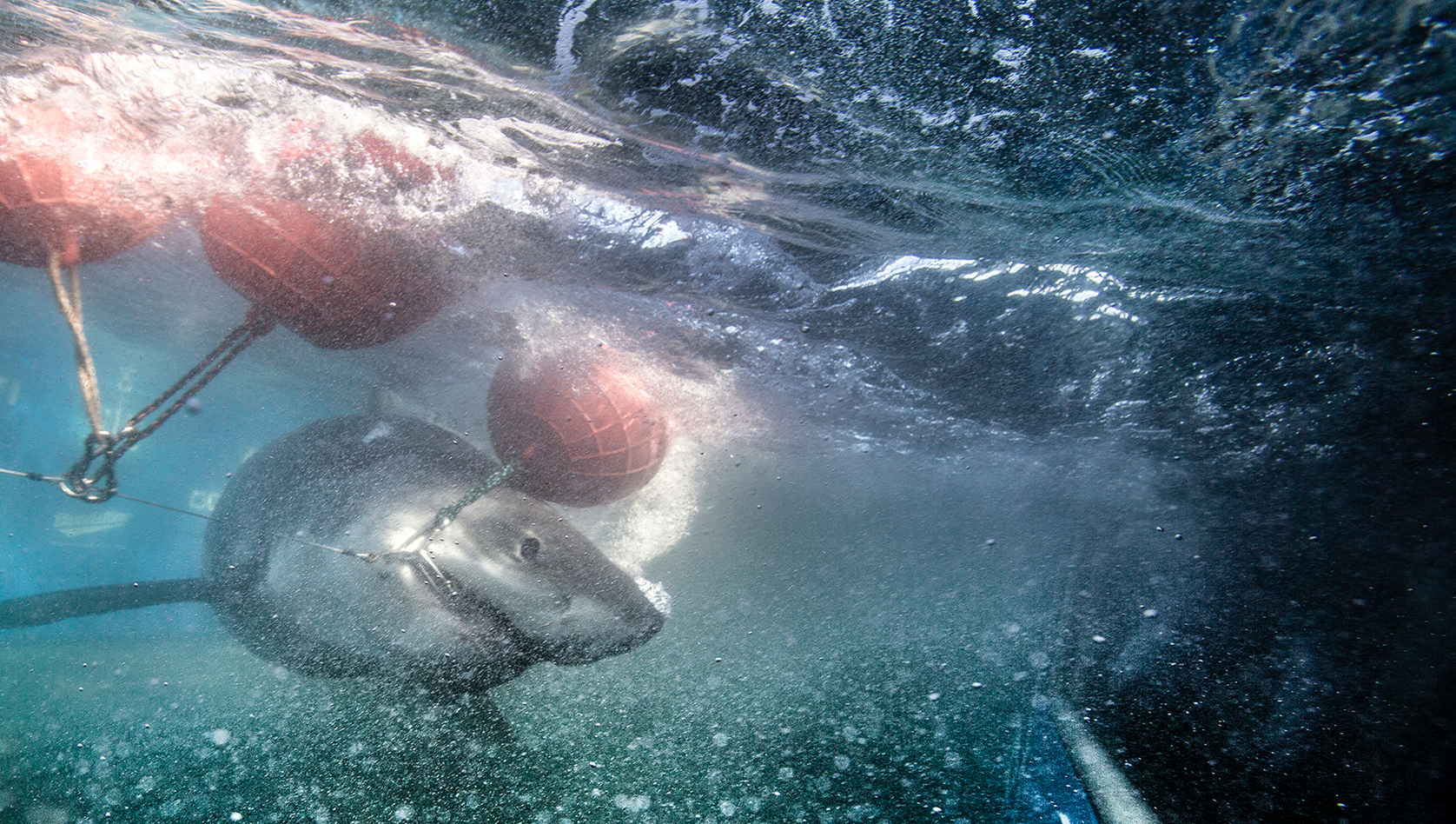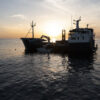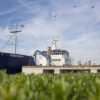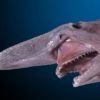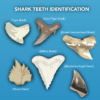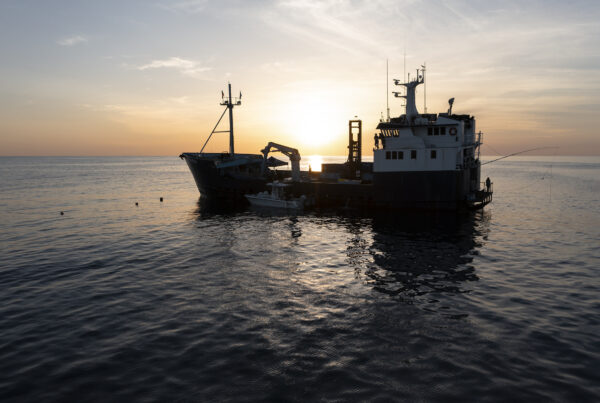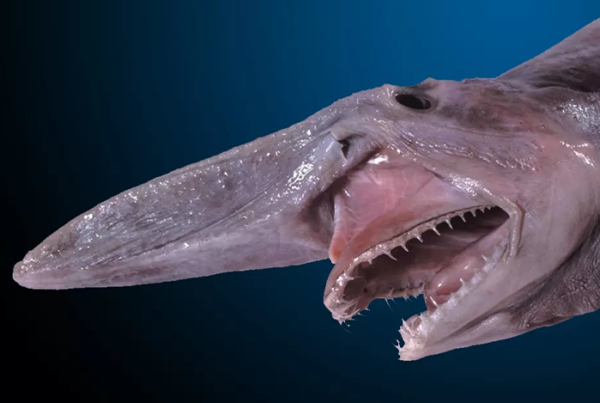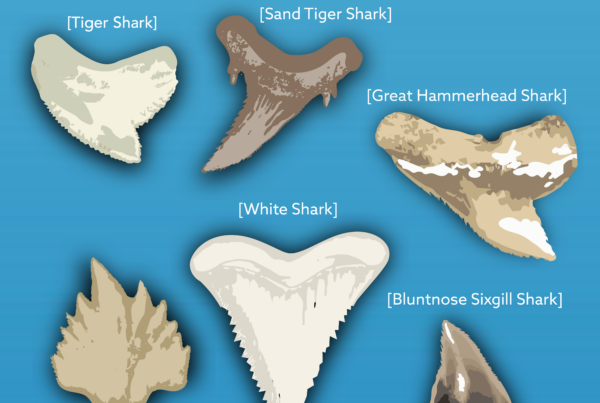OCEARCH Tags, Samples, and Releases a Total of Ten White Sharks in Nova Scotia
OCEARCH recently embarked on their 42nd Ocean Research Expedition in the waters off of Nova Scotia where they were successfully able to sample, tag, and release 10 white sharks.
The data collected from these sharks will support 24 different science projects, helping form a complete picture of the ecology, behavior and health of the white shark in the Northwest Atlantic Ocean.
This is OCEARCH’s fourth trip to Nova Scotia, a region that has quickly become one of our crew’s favorite places to work. Over the past four years OCEARCH has tagged 36 animals in Nova Scotia, all of which have helped quickly expand our knowledge of the white shark population in Atlantic Canada.
“When OCEARCH first came to this region we thought this could be where the mature adults were going to mate, but through our work with hormone levels and semen samples we know this is not happening here. The white sharks are coming to this region to bulk up on seals in the summer and fall, before heading south to endure the oncoming winter and go mate.“This is a radical leap forward in knowledge in a very short period of time simply because we included all the scientists, all the disciplines, and the public in that journey in real time,” explains OCEARCH Founder and Expedition Leader Chris Fischer.
Expedition Nova Scotia 2021 departed from Halifax on September 8 and headed south to West Ironbound Island before a final docking in Lunenburg on September 30. Despite dodging a bit of fog and bad weather, three weeks on the water resulted in the ability to sample, tag and release 10 new white sharks for the Northwest Atlantic White Shark Study.
OCEARCH’s Northwest Atlantic White Shark Study is the most comprehensive research study that has ever been done on a white shark population in the world and the data collected from the sharks tagged and sampled on our expeditions will support a variety of research projects including full health assessments, bacterial and microbiome studies and microplastic toxin exposure. In addition, three tags have been added to each shark which will allow scientists to track their long term movement and migration patterns.
After Expedition Nova Scotia 2021 OCEARCH’s Northwest Atlantic White Shark Study’s total sample size is 83 animals, just 17 away from their goal of 100 tagged and sampled sharks.
Meet OCEARCH’s New Sharks:
- Scot: A 12ft, 4 in and 1,644lb male, mature white shark that was named by our long time partners at SeaWorld for the people of Nova Scotia. Track Scot on the OCEARCH Global Shark Tracker.
- Hali: A 10ft, 2 in and 697lb female, juvenile white shark that was named by our long time partners at SeaWorld for the people of Halifax, Nova Scotia. Track Hali.
- Sable: A 11ft, 6in and 807lb female, juvenile white shark named after Sable Island National Park Reserve, an area known for its immense wildlife. Track Sable.
- Sarah: A 10ft, 4 in and 632lb female, juvenile white shark named after OCEARCH Founder and Expedition Leader Chris Fischer’s daughter. Track Sarah.
- Maple: A 11ft, 7in and 1,264lb female sub-adult white shark named after the maple lead, one of Canada’s national emblems. Track Maple.
- Ulysses: A 12 ft, 4in and 990lb male, mature white shark named after the founder of OCEARCH’s partner and fine Swiss watch manufacturer Ulysse Nardin. Track Ulysses.
- Bob: A 13ft, 4in and 1,308lb mature, male white shark named after OCEARCH’s Chief Scientist Dr. Bob Hueter. Track Bob.
- Tancook: A 9ft, 9in and 715lb male, juvenile white shark. Tancook means “facing the open sea” to the local indigenous Mi’kmaq people of Nova Scotia. Track Tancook.
- Keji: A 9ft, 7in and 578lb male, juvenile white shark named after the Kejimkujik National Park and National Historic Site, located in the region near where we were able to sample, tag and release him. Track Keji.
- Flower: A 10ft, 1in and 528lb female, juvenile white shark named after OCEARCH’s friend the Flower Family. Track Flower.
